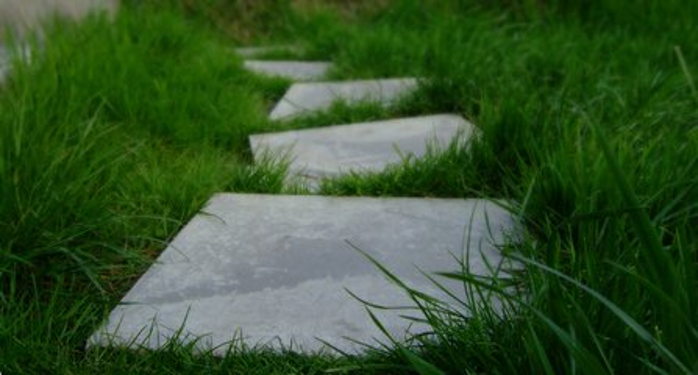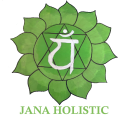
Ayurveda is a Sanskrit word meaning ‘the science of life’. Ayurvedic treatment ultimately aims to detoxify both the mind and the body, so that a natural balance can be restored. Panchakarma therapy is an ayurvedic cleansing program that brings the body back into homeostasis by balancing the doshas. According to Ayurveda, doshas are the three basic energies in the body: kapha (water), pitta (fire) and vata (air). Everybody is born with a unique combination of these three doshas and have a genetic proclivity towards which will be more dominant. When any of the doshas are out of balance, it can lead to both emotional and physical distress.
When you go for panchakarma therapy, it is good to know what it entails. Before any treatments are performed, a trained therapist will meet with you to thoroughly assess your needs. Panchakarma is an individualized therapy, so it may not occur in the same order or look the same for every person. Your therapist will look at your current therapeutic needs and will also consider your demographics, constitution and lifestyle in order to design your individualized treatment plan.
There are three general stages to panchakarma therapy: preparation, treatment and rejuvenation.
Preparation
This first stage is all about creating the optimal internal environment that is conducive to healing. Your therapist will assist you in creating a calming mental and emotional state. Preparation usually comes in the form of a warmed oil massage and/or a steam treatment. The focus is to relax…
The Treatment (5 Actions/Steps) Stage
The second stage is where panchakarma therapy takes place. In Sanskrit, panchakarma means the ‘five actions’ or ‘five steps.’ As such, there are five purification treatments that may be involved. A trained therapist will use any or all of the following treatments based on your individual needs at the time. Your treatment plan will specify which actions are required and for how long they should be endured.
- Vamana (Medical Emesis/Vomiting) – The goal of this treatment is to rid the body of any excessive mucus and toxins from both the respiratory system and the upper gastrointestinal tract. Clients will be given an herbal beverage to consume that will help to initiate regurgitation. Once this has been achieved, you will then enter a rest period.
- Virechana (Abdominal Cleansing/Purgation) – In this step, the goal is to rid the body of any excessive waste from the gastrointestinal tract, specifically that found in the small intestine. The client will ingest an herbal oil mixture and then have either a massage or steam bath that will further promote detoxification. Once the stools are of a watery consistency, you will then enter a rest period.
- Basti (Herbal Enema or Medicated Oil) – Often considered the most important and beneficial panchakarma therapy. There are two main forms.
- The goal of Herbal Enema Basti is to rid the body of any previously trapped fecal toxins in the (colon) large intestine. This is accomplished by inserting herbal liquids into the rectum while you lie on your side.
- The goal of Medicated Oil Basti is to bring healing directly to the portion of the body with pain and/or inflammation. This method of basti utilizes medicated oils. Depending on the area of concern, your therapist will make a thick dough that will be used to create a ring. This ring of dough will be placed around or on the area of concern and then warmed, medicated oil will be poured into this area. The dough provides a barrier that enables the oil to stay in the treated area. This medicated oil will remove toxins, reduce inflammation and improve circulation.
- Kati Basti – used in cases of lower back pain of various causes; oil is placed on the lower back
- Janu Basti – used in cases of knee pain of various causes; oil is placed on the knee(s)
- Prista Basti – used in cases of respiratory issues of various causes; oil is placed on the upper back
- Nabhi Basti – used in cases of digestive issues due to various causes; oil is placed in the naval
- Griva Basti – used in cases of neck pain of various causes; oil is placed on the neck
- Shiro Basti – used for neurological issues of various causes, as well as for stress/anxiety/insomnia; oil is placed on the head
- Uro Basti – used for heart and circulatory conditions of various causes; oil is placed over the heart
- Nasya (Nasal Oil Administration) – In this step, herbal oils/liquids are used to lubricate, open, cleanse and purify your nasal cavities. The goal of this treatment is to rid the body of accumulated toxins of the head and neck.
- Raktamokshan (Blood Letting) – This treatment is the least utilized in panchakarma therapy. It can be very helpful in treating acute conditions, as it is fast-acting, but the various methods need to be highly supervised by a trained therapist. Raktamokshan’s goal is to rid your body of toxins accumulated in deep tissues.
There are other ayurvedic treatments that often accompany panchakarma therapy and are usually included in this second stage. A few examples of these treatments can be found below:
- Kaval – medicated liquids that are to be held in the mouth as a means of directly affecting concerns in the buccal region (i.e. teeth, jaw, gums, tongue, etc)
- Dhumpana – inhalation of herbal smoke; this is often utilized in treating and preventing conditions that arise above the torso; also frequently used as a therapy for nicotine smoking cessation
- Karnapooran – medicated oil is applied to the ears; it is beneficial for tinnitus, impacted ear wax, relieves pressure on the inner ear and helps with TMJ pain
Rejuvenation
The third and final stage of panchakarma therapy is that of rejuvenation. This requires that the proper exercise and nutrition are provided to refuel and maintain a properly balanced, detoxified body. Your trained therapist can guide you towards what foods and beverages are best to consume in order to maintain your newly balanced doshas.
Some of the many benefits of this holistic treatment are stress relief, improved immune system function and an improved overall sense of well-being. Those trained in panchakarma therapy will perform this multi-stage (including the five cleansing steps) therapy for a period of time that required for your specific needs. This will be clearly spelled out for you after the completion of your initial assessment. The therapies themselves are enjoyable but there may be periods of a ‘healing crisis’ or ‘detox reaction’ that occur with most detoxification protocols. As you begin to detoxify your body and mind, the release of those toxins can cause some unpleasant symptoms (i.e. headache). However, as you flush toxins out of your system these symptoms go away. Having a detox reaction can be viewed as a sign that you are on the path to healing. It is recommended that panchakarma therapy be done annually, if possible. As this therapy is best when used as a preventive treatment, since the accumulation of toxins and chemicals can cause disease.
Ayurvedic medicine is a time-tested system of honoring the connection between mind and body, that has been practiced for thousands of years. It is not just a means of curing or treating an illness but a means of preventing disease from occurring. Although western medicine has not yet caught up to many of the eastern therapeutic practices, there are ongoing studies that try to identify some of the mechanisms of action that enable the positive results experienced. For example, in 2016, the Journal of Ayurvedic and Integrative Medicine published the case study of a 1 month postpartum 27 year old woman that had a complete remission of symptomatic rheumatoid arthritis within 4 months of panchakarma treatment (with the first improvements being seen after just 15 days). This is not to say that these results will be seen in everyone, as individual results may vary, but it is evidence that there is more work to be done when it comes to identifying just how to best work with the intricacies of the human body. Ayurveda can provide a multitude of benefits.
